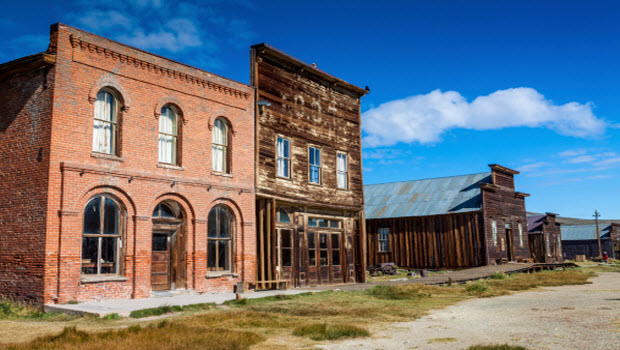News of a gold and silver bonanza attracted thousands to the sparsely populated regions of Arizona in the late 19th century. However, the boom and bust of the early mining industry caused many towns to become abandoned almost as quickly as they were built. Here is a short list of some of Arizona’s best ghost towns from the historic to the haunting.
Ruby
Due in part to its isolated location in a harsh stretch of the Sonoran Desert, Ruby remains one of the best preserved ghost towns in Arizona. Nestled below the Montana Peak, the town prospered all the way through the 1920s and 1930s until being abandoned in the early years of World War II. More than 20 structures still stand on the property including an old jail and a schoolhouse. The property is now privately owned, but tours and visits are open to the public in exchange for donations to ongoing restoration efforts. There are no services available in the rugged country, so pack provisions and a spare tire when travelling from hotels in the Tucson or Tubac area.
While Tombstone never actually became a ghost town, the short-lived silver rush in the area littered the surrounding landscape with a treasure trove of abandoned towns and mines. Any trip to this iconic Wild West destination would benefit from a jaunt through the dilapidated grounds of nearby Gleeson, Courtland, and Pearce. The desolate ruin of this trio of ghost towns provides a nice contrast to the colorful kitsch and careful conservation found in Tombstone itself.
Castle Dome
Situated 40 miles north of Yuma, the remains of the Castle Dome town and mining camp have been carefully restored and turned into a museum and tourist attraction. Several dozen structures are open to the public including a saloon, bank, and dental office. The interiors are festooned with an impressive collection of artifacts, mining equipment, furniture, and old newspaper clippings. Castle Dome is easily accessible by car and makes for a nice day trip when staying in Yuma.
Vulture City
Located 12 miles southwest of Wickenburg, the most productive gold mine in Arizona history is now one of the most impressive ghost towns in the American West. In 1863, Prussian prospector Henry Wickenburg made the fortuitous discovery of a large quartz deposit after retrieving the body of a vulture he had shot. At its peak, the mine supported a population of nearly 5,000 residents. Due to the recent spike in gold prices, there is renewed speculative interest in mining the property. Available tour times can be quite limited, so be sure to check the schedule before making the trek from the Phoenix or Prescott areas.
Two Guns
One of the most eccentric ghost towns in northern Arizona sits just off Interstate 40 to the east of Flagstaff. Started as a trading outpost in the early 19th century, Two Guns developed into a popular stop after the arrival of the National Old Trails Road and Route 66. Leasing land from owners Louise and Earl Cardiff, a publicist named Henry Miller turned the area into a tourist trap complete with its own zoo. Miller also ransacked and renovated the nearby Apache Death Caves, selling off the bones from the mass grave as souvenirs during various permutations of his “mystery cave” attraction. His actions were said to have brought a curse to the roadside complex. Miller would later shoot and kill Earl Cardiff in a dispute, get mauled by mountain lions, and be bitten by one of his captive Gila monsters. Two Guns fell into disrepair until the arrival of I-40 when it was given its own exit ramp. However, in the 1970s the local gas station inexplicably burned in an inferno and the KOA campground was later abandoned. The graffiti-covered remains of Two Guns are inhabited solely by bats and rattlesnakes today, but provide an interesting distraction for adventurous travelers staying in Flagstaff or Winslow.
Darren Davis is a truck driving instructor and published travel writer from Tucson, Arizona.
![]()






